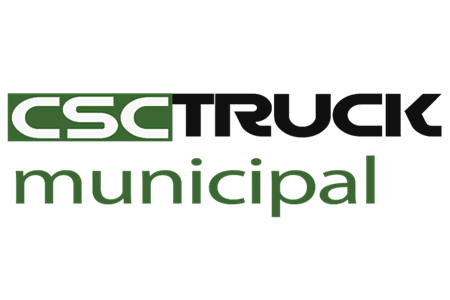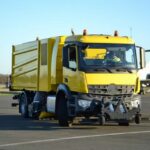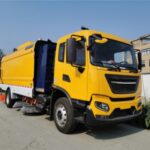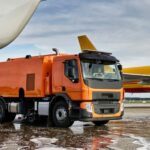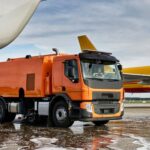Beyond Dust and Debris – The Unseen Battle for Operator Well-being
The image of a road sweeper gliding down a city street or an airport sweeper truck meticulously cleaning runways often conjures thoughts of pristine surfaces and environmental stewardship. Yet, within the enclosed cabins of these essential machines, a silent and often overlooked battle rages—one against microscopic invaders threatening the health and safety of the operators who keep our infrastructure functional. While the primary function of sweeper trucks is to remove visible debris, the process inevitably aerosolizes a complex cocktail of particulate matter, biological agents, and chemical residues, transforming the operator’s cabin into a potential hotbed of inhalation hazards. Sophisticated air filtration systems are not merely an added comfort feature; they represent a critical engineering imperative, forming an invisible shield between the operator and a hazardous occupational environment, safeguarding immediate respiratory health, ensuring long-term wellness, mitigating liability, and ultimately preserving the continuity and efficiency of vital municipal and aviation services. The consequences of neglecting this vital component extend far beyond operator discomfort, impacting operational costs, regulatory compliance, and the fundamental duty of care owed to those performing this demanding public service.
The Nature of the Threat – Deconstructing the Airborne Hazard Cocktail
What Operators Breathe Inside a Moving Sweeper
The act of mechanical sweeping, whether by a municipal truck cleaning downtown streets or a specialized airport sweeper truck maintaining critical flight surfaces, generates a surprisingly diverse and hazardous aerosol cloud. Understanding the specific contaminants is paramount to appreciating filtration needs:
- Particulate Matter (PM) – The Ubiquitous Foe: Sweeping operations liberate vast quantities of particulate matter, categorized by size (PM10, PM2.5, and ultrafine PM<1.0). Coarse PM10 (dust, tire wear, sand) irritates eyes and airways, while finer PM2.5 and ultrafine particles penetrate deep into the lungs and even enter the bloodstream. Sources are legion: road dust laden with brake pad residues (containing heavy metals like copper and antimony), tire wear particles (complex synthetic rubber compounds), construction debris (silica dust), soil, decaying organic matter, and road salt crystals pulverized into inhalable fragments during winter operations. The concentration within mere feet of the sweeping mechanism is orders of magnitude higher than ambient urban air.
- Biological Contaminants – The Unseen Invaders: Stirred-up dust is rarely sterile. It harbors a potent mix of biological agents, including airborne allergens (pollen, mold spores), bacteria (from animal feces, decaying vegetation, sewage leaks), viruses (potentially aerosolized from contaminated surfaces), and fungal spores. Operators in areas with significant bird populations (common near airports and waterfronts) face heightened exposure to allergenic proteins from bird droppings. In damp climates or seasons, mold spores proliferating in accumulated leaf litter or organic sludge become a significant concern.
- Chemical Vapors and Mists – The Stealthy Peril: Beyond solids, sweeping releases chemical irritants. Diesel exhaust fumes from the sweeper itself or nearby traffic contain harmful gases (NOx, SO2, CO) and carcinogenic diesel particulate matter (DPM). Deicing fluid residues (particularly ethylene or propylene glycol-based fluids and their potentially toxic additives) on airport aprons can be aerosolized during sweeping, releasing volatile organic compounds (VOCs) and creating slippery mists. Sweeping near industrial areas or accident sites might involve unknown chemical spills. Even cleaning agents used on the sweeper’s exterior can introduce fumes if ventilation is inadequate.
Health Impacts – From Acute Discomfort to Chronic Disease
The Direct Consequences of Compromised Cabin Air Quality
Failure to effectively filter this hazardous cocktail leads to a spectrum of operator health issues, ranging from immediate, debilitating symptoms to insidious, long-term diseases:
- Acute Respiratory Distress and Allergic Reactions: Operators who breathe unfiltered or poorly filtered air experience immediate respiratory irritation, including persistent coughing, wheezing, shortness of breath, sore throat, and nasal congestion. Exposure to high levels of airborne allergens or biological contaminants can trigger severe allergic reactions (rhinitis, conjunctivitis, asthma attacks) and infections, leading to lost workdays and requiring medical intervention. Eye irritation from dust and chemical mists further impairs operator comfort and situational awareness.
- Exacerbation of Pre-Existing Conditions: For operators with asthma, COPD, or allergies, exposure to sweeper cabin contaminants acts as a potent trigger, significantly worsening symptoms, increasing the frequency and severity of attacks, and accelerating disease progression. This creates a cycle of reduced work capacity and heightened health vulnerability.
- Long-Term Latent Health Risks: The most severe consequences are often delayed. Chronic inhalation of fine particulate matter (PM2.5/UFPs) is conclusively linked to the development of cardiovascular diseases (heart attacks, strokes, hypertension), chronic respiratory diseases (chronic bronchitis, emphysema), and lung cancer. Prolonged exposure to diesel exhaust and certain heavy metals (e.g., chromium, nickel in brake dust) further elevates cancer risk. Occupational asthma can develop in previously healthy individuals due to sensitization to specific biological or chemical agents encountered during sweeping. These chronic conditions represent profound personal suffering and substantial long-term healthcare costs.
The Filtration Solution – Engineering the Invisible Shield
Beyond Basic Filters: The Technology Safeguarding Lungs
Modern air filtration systems for sweeper cabins are sophisticated, multi-stage defenses designed to tackle the complex contaminant profile:
- Multi-Stage Filtration Architecture: Effective systems employ a layered approach. A robust pre-filter traps the bulk of coarse dust and debris (PM10 and larger), protecting the more delicate and expensive downstream filters. The core defense is a High-Efficiency Particulate Air (HEPA) filter or an efficient particulate air (EPA) filter. True HEPA filters capture at least 99.97% of particles 0.3 microns in diameter – effectively removing virtually all fine dust, most bacteria, and many viruses. EPA filters offer high efficiency (e.g., 85-95% at 0.3 microns) and are often a practical balance for sweeper applications. Some advanced systems incorporate an activated carbon filter stage downstream. This porous carbon matrix adsorbs gaseous pollutants, VOCs, odors (like diesel fumes, deicing fluid smells), and certain chemical mists, providing crucial protection against non-particulate hazards that HEPA filters cannot catch.
- Pressurized Cabin Principle: The most effective systems don’t just filter incoming air; they maintain the cabin under slight positive pressure. This means filtered air is constantly supplied at a volume slightly greater than what escapes through natural cabin leaks. This positive pressure acts as a barrier, actively pushing contaminated air away from potential leak points (door seals, window edges, cable pass-throughs), ensuring that even minor breaches don’t allow unfiltered air to infiltrate the operator’s breathing zone.
- System Integrity and Monitoring: The best filtration technology is compromised by poor installation or maintenance. Robust sealing around the filter housing and air intake points is essential to prevent bypass. Regular filter replacement schedules, based on operating hours and environmental conditions (e.g., more frequent changes during dusty summer months or winter salt operations), are critical. Some systems incorporate filter condition monitoring (pressure differential gauges or electronic sensors) to alert the operator when resistance increases, indicating clogging and the need for replacement before efficiency drops.
Operational Imperatives – Beyond Health, Ensuring Efficiency and Compliance
Why Filtration is a Core Component of Fleet Management
Investing in and maintaining high-performance cabin air filtration delivers tangible operational benefits that extend directly to the bottom line and service reliability:
- Reduced Operator Absenteeism and Turnover: Healthier operators mean fewer sick days (reduced absenteeism) due to respiratory illnesses, allergies, and fatigue caused by poor air quality. A comfortable, safe cabin environment also improves operator morale and job satisfaction, directly combating the high operator turnover rates often plaguing the sweeping industry. Retaining experienced operators reduces recruitment and training costs.
- Enhanced Situational Awareness and Safety: Clean cabin air free of excessive dust and chemical fumes prevents eye irritation and minimizes coughing fits or respiratory distress while operating complex machinery. This allows operators to maintain optimal focus and situational awareness, crucial for safely navigating busy streets, airport taxiways, or complex work zones, thereby reducing the risk of accidents.
- Regulatory Compliance and Liability Mitigation: Occupational health and safety regulations (like OSHA in the US or equivalent bodies globally) increasingly emphasize controlling airborne hazards. Employers have a general duty to provide a workplace free from recognized hazards. Failure to implement adequate engineering controls, like effective cabin filtration, can lead to regulatory citations, fines, and increased scrutiny. More critically, documented neglect of cabin air quality can expose municipalities and contractors to significant liability in the event an operator develops a demonstrably work-related respiratory illness or cancer, potentially resulting in costly workers’ compensation claims or lawsuits. Proactive filtration is a key risk management strategy.
Specialized Needs: Airport Sweeper Truck Environments
Unique Hazards Demanding Enhanced Protection
Airport sweeper truck operators face a distinct and often intensified set of airborne hazards, making advanced filtration particularly critical:
- Jet Blast and Prop Wash: The intense airflow from aircraft engines (jet blast or prop wash) during taxiing, takeoff, or engine run-ups can violently recirculate dust, debris, and chemical residues over vast areas of the apron and runway. This dramatically increases the concentration and dispersal of contaminants that a sweeper truck operating nearby must contend with, overwhelming basic filtration systems.
- Concentrated Deicing Fluid Residues: Airports use large volumes of glycol-based deicing and anti-icing fluids during winter operations. Sweepers cleaning aprons, taxiways, and deicing pads encounter concentrated residues of these fluids. When disturbed, they create vapors and mists containing VOCs and potentially toxic additives. Effective filtration must include a strong activated carbon component to adsorb these specific chemical threats, which are less prevalent in standard municipal street sweeping.
- Rubber Deposits and Composite Dust: Runway sweeping specifically targets aircraft tire rubber deposits (“rubber removal”). Grinding or vacuuming this hardened rubber generates fine, potentially reactive rubber dust particles. Furthermore, sweeping around maintenance areas might involve composite dust from aircraft materials (e.g., carbon fiber fragments). Filtration systems must be capable of handling these unique particulate profiles efficiently. The critical nature of runway safety also means operator incapacitation due to poor air quality mid-task is unacceptable, demanding the highest reliability in cabin environment control.
The Future of Clean Air in Sweeper Cabs – Integration and Responsibility
Making the Invisible Shield a Standard of Care
The imperative for clean cabin air in road sweeper and airport sweeper truck operations is clear. Moving forward, this requires a holistic approach integrating technology, policy, and operational culture:
- Specification as Standard, Not Optional: Procurement specifications for new municipal truck sweepers, whether for city streets or airport contracts, must explicitly mandate multi-stage filtration systems (combining pre-filters, HEPA/EPA filters, and activated carbon) with positive cabin pressure as non-negotiable standard equipment. Treating this as an optional upgrade undervalues operator health and operational risk.
- Maintenance as a Critical Operational Protocol: Fleet managers must elevate air filter maintenance to the same level of importance as engine oil changes or hydraulic servicing. Implementing strict, condition-based replacement schedules, training mechanics on proper system inspection and sealing, and ensuring ready availability of correct filter elements are essential. Operator pre-trip checks should include a visual inspection of the cabin air intake area.
- Operator Training and Awareness: Operators need to understand why the filtration system matters and how it protects them. Training should cover the types of hazards they face, the function of each filter stage, the importance of keeping windows/doors closed, recognizing signs of filter failure (increased dust, odors, reduced airflow), and the procedure for reporting concerns. Empowering operators as stakeholders in their own protection fosters compliance with cabin integrity practices.
- Technological Evolution: Continued innovation is welcome. Wider adoption of real-time cabin air quality monitors (displaying PM levels, VOC indices) could provide operators and fleet managers with actionable data. Exploring enhancements like gas-phase filtration targeting specific airport deicing fluid components or integrating cabin air purification with battery-electric sweeper operation (eliminating diesel exhaust at the source) represent promising future directions. The commitment to clean cabin air must be continuous, evolving alongside the technology and the ever-present need to protect the individuals operating these indispensable municipal truck assets. Their health is intrinsically linked to the health of the communities and infrastructure they serve.
